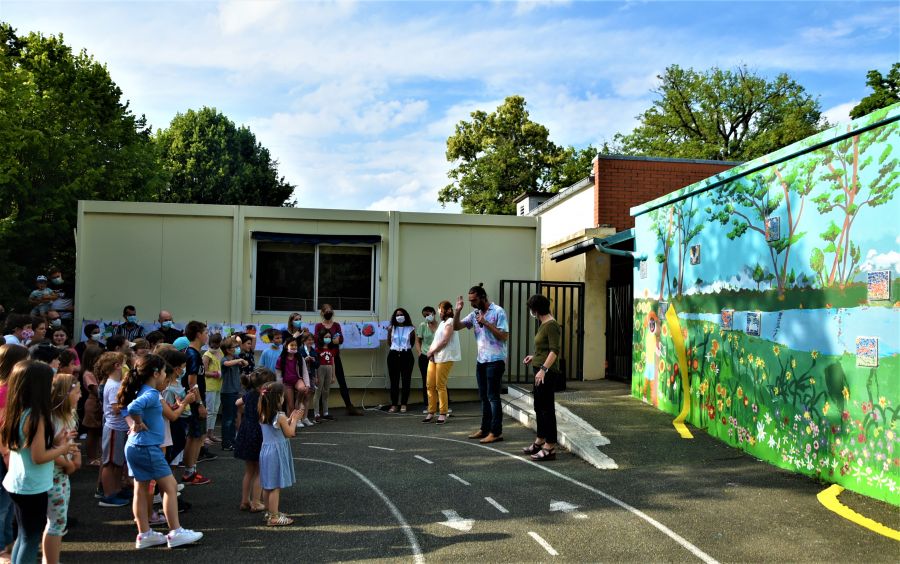

In 1933, separated from ANF Les Mureaux, Couzinet was on the verge of bankruptcy so the research agency was integrated with the Breguet Aviation (Société anonyme des ateliers d’aviation Louis Breguet) in Vélizy-Villacoublay. Īll the aircraft retained the same three-engined layout but were never fully accepted by the officials of the French aeronautics industry. Their triumphant return to Le Bourget on May 21 was greeted by 15,000 people, and the aircraft was then operated by Air France until 1937. On 16 January 1933, piloted by Jean Mermoz and accompanied by Couzinet himself, he crossed the South Atlantic from Saint-Louis, Senegal to Natal in less than two hours. The Couzinet 70 Arc-en-ciel III made its first flight on 11 February 1932. Returning from North Africa it crashed at Blaisy-Bas in the Côte-d'Or on 30 October 1933.
#Ecole jean mermoz velizy plus
The Biarritz, repaired and equipped with more powerful engines, went on to perform in Europe and Africa including carrying Pierre Cot, The Air Minister, between Moscow and Paris plus several flights in Africa including the islands of Cape Verde. The crew were unharmed by its rough landing at Tontouta Nouméa but it was dismantled and shipped back to France by sea. From March 6 to April 5, 1932, it completed the first air link from France to New Caledonia piloted by Charles de Verneilh Puyraseau, Max Dévé second pilot and radio operator, and Emile Munch mechanic. The Couzinet 33 Biarritz, a four-seater passenger plane, made its first flight on 25 November 1931. L'"Arc-en-Ciel", 14 June 1934, landed for the first time at Fernando de Noronha, Brazil. On 17 February 1930 a fire destroyed the workshops of Émile-Louis Letord at Meudon, losses these included a twin tri-motor engined Couzinet 20 and a Couzinet 27 Arc-en-ciel II. The mechanic Lanet was killed immediately, the pilot Drouin died a few days later, and Manuel Gianoli survived. In 1928, he built the Couzinet 27, a four-seater which crashed during trials on August 8, 1928.

The leading French engineer Albert Caquot was also involved with the project. The aircraft manufacturer ANF Les Mureaux agreed to take charge of the first prototype, with Couzinet consulting, making observations and studies. Jacques Lacoste, managing director of engine manufacturer Hispano-Suiza, lent him three engines without charge, and additionally he raised a loan of $50,000 US Dollars. It was a three-engined monoplane with thick wings and a tapered body and tailplane, which was characteristic of all Arcs-en-Ciel to follow. In 1927 he built the Couzinet 10 Arc en Ciel ( Rainbow) No 1, a modern shape for its time. He financed his studies by working in a turbine factory, before joining the French Air Force ( Armée de l'air) in November 1925, where he became a lieutenant. In 1924 he attended the École supérieure de l’aéronautique (Graduate School of Aeronautics). In 1921 he enrolled at the École Nationale Supérieure d'Arts et Métiers (ENSAM) (School of Arts and Crafts) at Angers (with Louis Béchereau), where he both graduated and filed several aviation patents. Couzinet's father was a school teacher, and from a very young age he was fascinated by aviation and observing the flight of swallows.


 0 kommentar(er)
0 kommentar(er)
